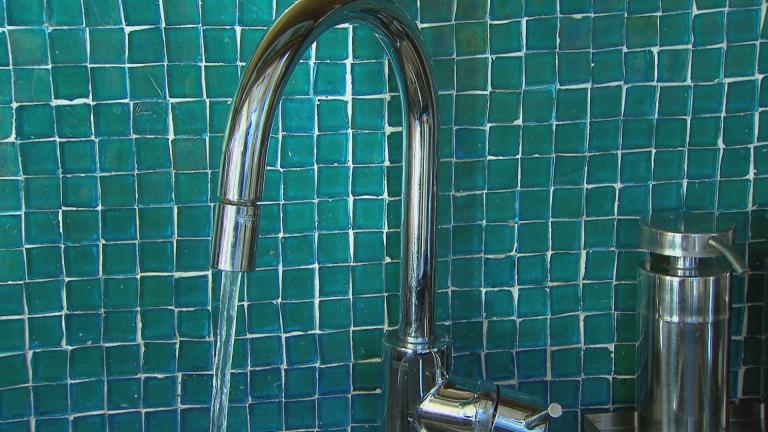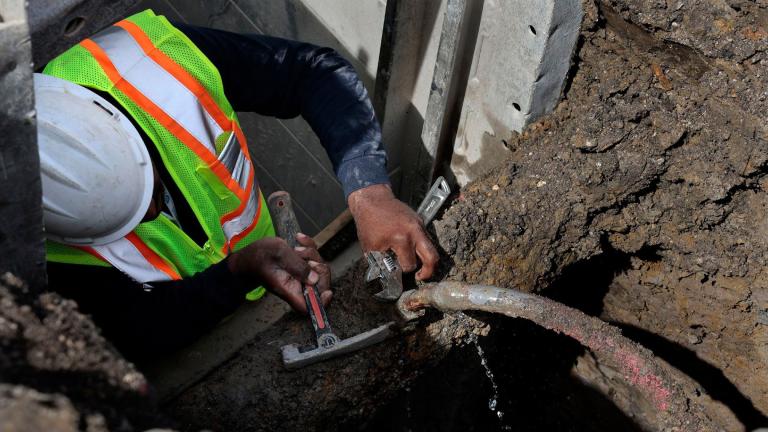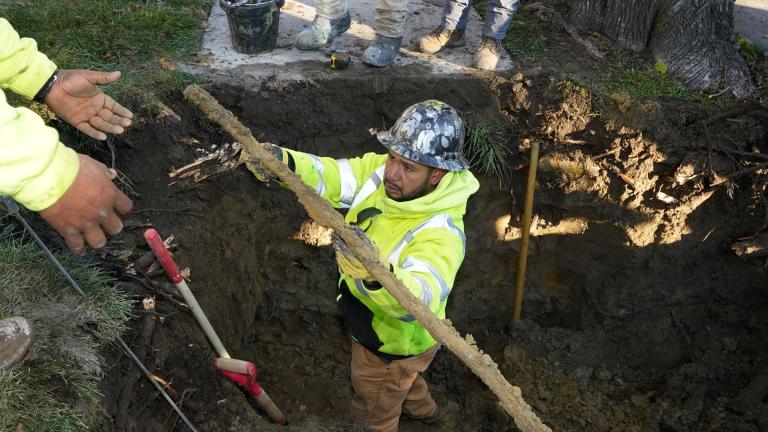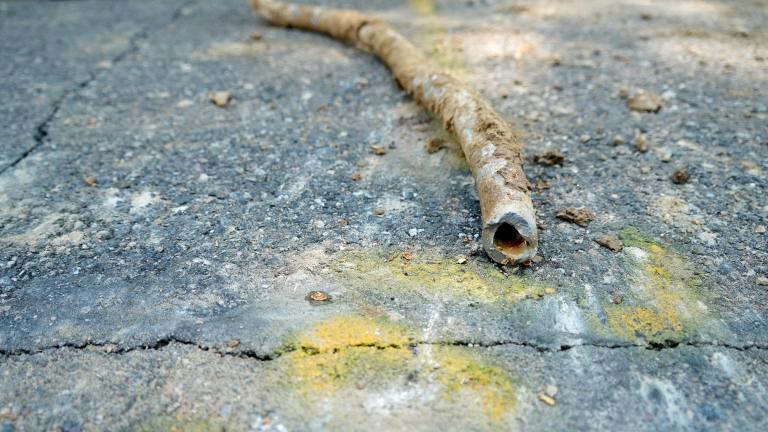While some may see it as a relic of the past, lead paint is still a hidden health hazard in most Chicago homes.
Paint containing lead has been outlawed in Chicago since 1978, but a WTTW News investigation has found the vast majority of Chicago’s housing stock still contains potentially toxic levels of the substance and that most children are not being tested regularly.
Environmental advocates say the health risk from lead paint could be eliminated if the city proactively inspected older homes for lead.
It’s a danger one Chicago family knows all too well.
Like any 2-year-old, Jedi Ruzicka is an active and spirited child. But his mother, Alainah Long, says he is in therapy every day for physical, behavioral and cognitive health problems. She says she noticed something wrong in October of last year at his 18-month checkup
“He wasn’t talking, he wasn’t making eye contact and I did notice he was eating things that weren’t food,” Long said.
Doctors sent Jedi to Rush University Medical Center’s emergency room for lead poisoning. The Centers for Disease Control and Prevention considers any level above 5 micrograms per deciliter of blood to be dangerous. Jedi’s level was 76.
“It’s really scary because I didn’t know where this was coming from. And then we found out he was poisoned in his own home,” Long said.
“The most likely source of lead poisoning for children in Chicago is lead-based paint,” said Dr. Candice Robinson, medical director of the Chicago Department of Public Health.
CDPH inspectors went to the family’s Belmont Cragin apartment and found peeling paint and dust in common areas like doorways, hallways and stairwells. They also found paint peeling off rotting windowsills in the family’s bedrooms.
 A door with chipped paint is pictured at the former Belmont Cragin residence of 2-year-old Jedi Ruzicka. (WTTW News)
A door with chipped paint is pictured at the former Belmont Cragin residence of 2-year-old Jedi Ruzicka. (WTTW News)
Jedi had been exposed for a year, likely inhaling dust and eating paint chips. Inspectors said Jedi could return home safely once those areas were cleaned — but Long says the family decided to move out instead.
Per federal law, landlords must notify their tenants about known lead paint risks before they move in.
WTTW News reached the landlord of the family’s former residence by phone. He admitted that he failed to do so, saying he didn’t know there were any lead paint risks.
He also said the lead had not yet been abated. Robinson acknowledges the cleanup can take months.
“Our inspectors follow up with owners on a monthly basis to ensure that is happening to make sure they are making repairs to the property,” Robinson said.
According to medical records, doctors diagnosed Jedi with a series of health problems, including mixed expressive language disorder, autism spectrum disorder and moderate cognitive impairment.
Medical experts have tied lead poisoning to all of those medical conditions.
“It’s been well documented that lead damages a child’s brain, which results in cognitive impairments and behavioral problems, so without a doubt lead is possible in all of those outcomes,” said Anne Evens, CEO of Elevate, a nonprofit that advocates for healthy and affordable housing, and has pushed for proactive lead inspections.
The number of Chicago children with elevated lead levels has plummeted in the last 25 years. In 1996, 70% tested positive for elevated levels compared to under 2% in 2021, according to CDPH data.
But the city’s health department admits less than 50% of children are being tested regularly, a city requirement. And CDPH data finds that in many low income communities and communities of color, between 30% and 40% of all residents in older homes tested positive.
“In older homes, we find paint is starting to deteriorate and break down,” Robinson said.
In a follow up email, a spokesperson responded, “CDPH Finds lead hazards in about 99 percent of residences built before 1978.”
The city’s health department provides pamphlets and informational videos online, but currently has no system to proactively inspect or abate at risk units.
When asked why the city didn’t proactively inspect and mitigate at-risk housing, Robinson responded that resources were only allocated to the system currently in place.
A proposed city ordinance called the Chicago Healthy Homes Check Up Pilot Program would require periodic inspection for all pre-1978 units. Advocates acknowledge it would cost billions, at a time when the city might have to spend between $10 billion and $15 billion to replace lead water service lines.
“Do we have the political will to spend the money now and prevent future generations from these terrible outcomes?” Evens said.
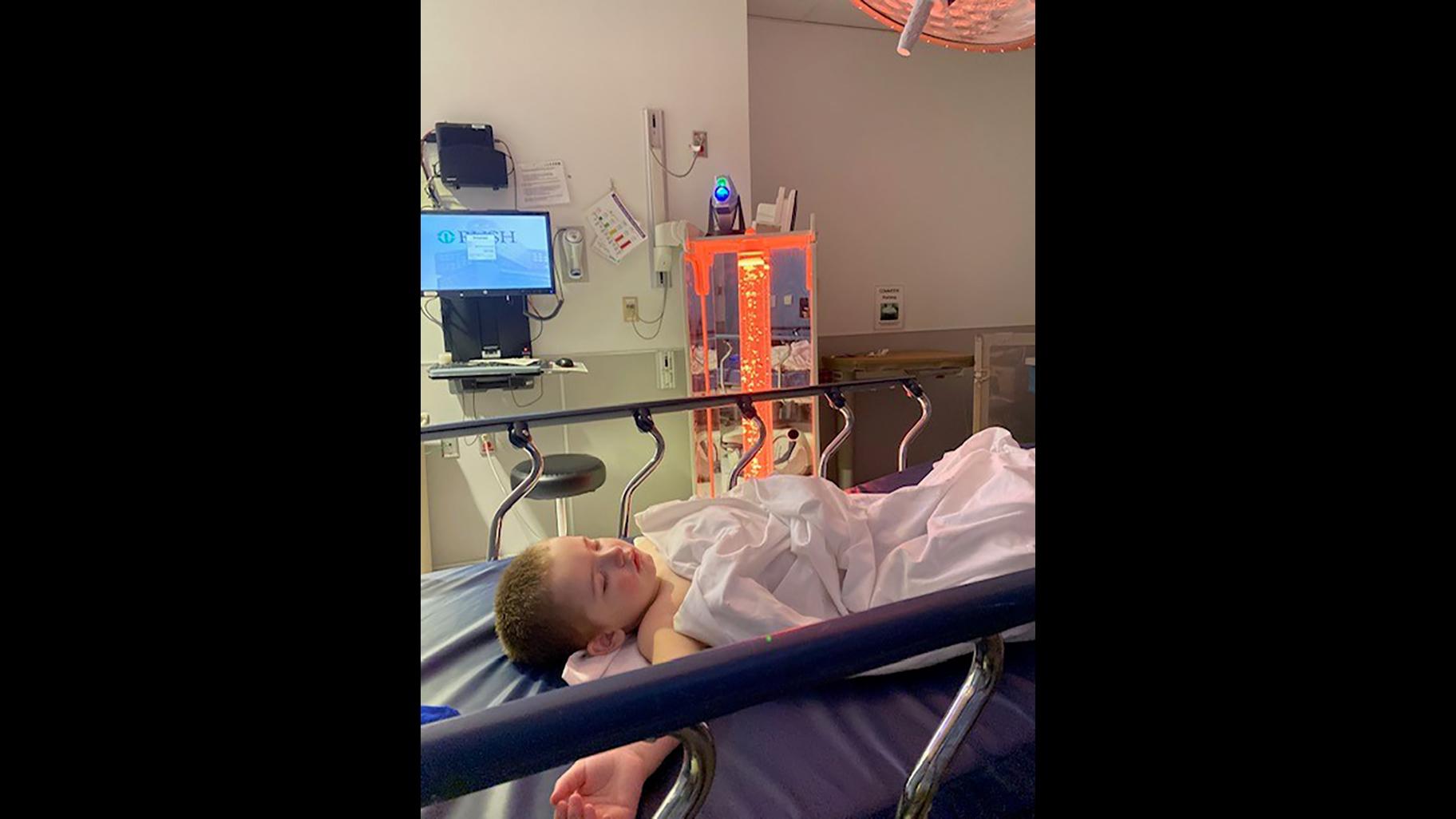 Jedi Ruzicka is pictured in the hospital while being treated for lead poisoning. (Credit: Alainah Long)
Jedi Ruzicka is pictured in the hospital while being treated for lead poisoning. (Credit: Alainah Long)
Long says she hopes Jedi’s story is a wakeup call to the city. Five months after Jedi’s poisoning, he is registering a blood lead level of 17 micrograms per deciliter of blood — still more than three times above the level considered dangerous.
“Seeing my son having these delays that he’s having — it really hurts because he should be able to do what other kids are doing and he hasn’t been doing them yet,” Long said.
A GoFundMe campaign has been organized to help with Jedi’s medical expenses.

